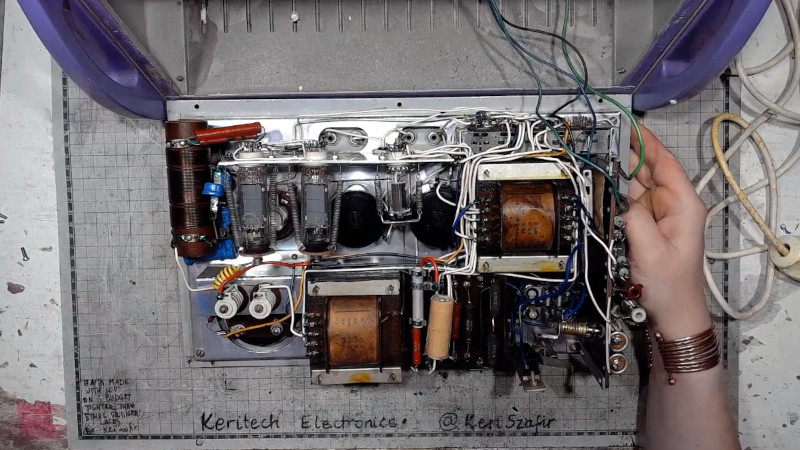If you’ve ever been to the dental surgery and found yourself requiring some gum surgery, the chances are you’ll have found your dentist wielding an electronic probe to cauterise the flesh. It’s evidently some form of RF device because you are usually required to hold one of the electrodes while it’s being used, but annoyingly, for an engineer, it’s hardly the time or place to ask how it works. For the curious, then, [Keri Szafir] has the box of tricks behind the probe and is subjecting it to a teardown.
The box on her bench isn’t the one you’ll find in your dentist’s toolkit today, but its distant ancestor from the 1960s that integrates multiple functions into a single box. It’s a very period enclosure with typically 1960s-style vacuum tubes and point-to-point wiring. There’s an HF oscillator using a pair of EL81 power pentodes for that electrode you always wished you could ask your dentist about, and unexpectedly, a thyratron, a type of gas-filled switching tube not dissimilar to a thyristor, in a separate circuit for dental pulp testing. We’re not dental experts here at Hackaday, but [Keri] has done the research and explains the device in the video below the break. At one point, she observes that it’s quite a scary machine to be connected to a living person, and we can concur with that.
Her bench has provided a few projects here in the past, including one of her amplifiers. While it might be fun to tear down a more modern version, you are better off asking for old dental burrs.
















I remember our dentist back in the 1960s had a large multi function machine next to the dental chair. It was a sickly color green, had a motorized door to hide the instruments.
Dentists were not the only ones that used boxes like this. I got a vasectomy in the early 90’s and other than having a ground pad stuck to my butt instead of holding it, it was remarkably similar kit. Memorable gig, it was.
Reminds me when I had to go for, uh, performance tests related to fertility. I was twice interrupted while attempting to produce a sample. Good thing the door was locked. That was a bizarre experience, though (going even further off tangent here) the IVF (fertilization process) was fascinating, including getting the opportunity to look at the, uh, products under a microscope.
Trying hard here to not use words that may be inappropriate.
Electro cautery is used for every single surgery today. That is either monopolar where a sticky grounding pad is stuck to the thigh or wherever and the probe tip used by the surgeon completes the circuit or bipolar that is basically a pair of tweezers where the current just goes between the tips. In general it is used either to “cut” and aids bleeding free dissection or in “coag” for “buzzing” bleeders. It’s known as a Bovie.
Maybe on a tangent but I remember 15-20 years ago, hygienists used a “sand blaster” on teeth where the medium was calcium carbonate of similar. But they disappeared to be replaced by scraping again.
I wonder what happened to them?
Seems you’d have a clean up problem.
The ultrasonic chisel seems to be the choice in plaque removal nowadays. Much less pressure and discomfort than that hook-pin torture long process.
Could one of these be quicker for flux removal on boards?
I asked my dentist why they don’t use the ultrasonic remover and they said it its usually for cases that have a lot of plaque but wasn’t as easy to be thorough. Probably just the technique that they are comfortable with.
Hold the electrode !!!!
That seems like an invitation for a heart attack, even if the path doesn’t go directly through the heart.